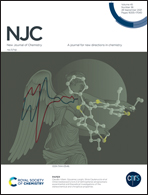N-rich porous carbon catalysts with huge surface areas from bean curd activated by K2CO3
Abstract
Nitrogen-doped carbon materials with hierarchical porous structures have attracted huge attention in the field of catalysis owing to their special structures and properties in past few decades. In this study, a series of metal-free and N-rich porous carbon catalysts (NPCs) were synthesized by a one-step activation-pyrolysis process. The catalytic performance of NPCs obtained from using bean curd as the carbon and nitrogen precursors and activated via pyrolysis in a nitrogen atmosphere with different amounts of K2CO3 was investigated for the selective oxidation of ethylbenzene. The catalysts were characterized using a series of techniques, such as N2 adsorption–desorption isotherms, Raman spectroscopy, TEM, SEM, and XPS. The results presented that the as-prepared samples have specific surface areas as high as 1459 m2 g−1. Furthermore, NPC-10 displayed the optimal catalytic performance among the catalysts. The ethylbenzene conversion of 96.2% over NPC-10 with a selectivity to acetophenone of 97.0% is even comparable to the results of some metal-doped catalysts, which may be attributed to the hierarchical porous structures and plenty of C–NX active sites. This work provides a facile and novel strategy for the construction of metal-free and N-rich carbon materials with excellent catalytic activity for the selective oxidation of ethylbenzene.



 Please wait while we load your content...
Please wait while we load your content...